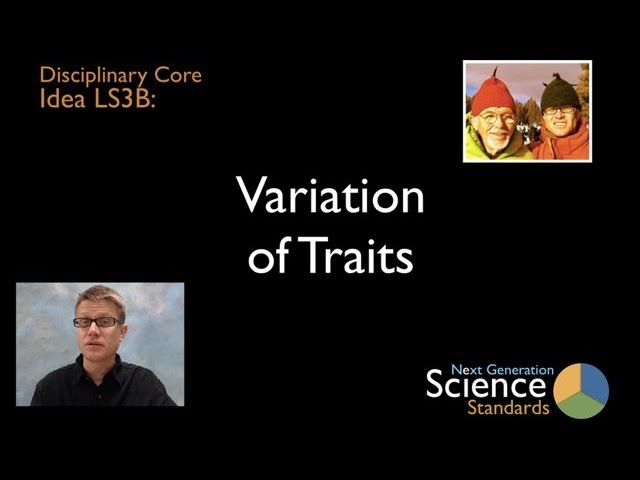LS3.B: Variation of Traits
Why do individuals of the same species vary in how they look, function, and behave?
K-12 Progressions
| K-2 | 3-5 | 6-8 | 9-12 |
|---|---|---|---|
| Young organisms are very much, but not exactly, like their parents and also resemble other organisms of the same kind. | Different organisms vary in how they look and function because they have different inherited information; the environment also affects the traits that an organism develops. | In sexual reproduction, each parent contributes half of the genes acquired by the offspring resulting in variation between parent and offspring. Genetic information can be altered because of mutations, which may result in beneficial, negative, or no change to proteins in or traits of an organism. | The variation and distribution of traits in a population depend on genetic and environmental factors. Genetic variation can result from mutations caused by environmental factors or errors in DNA replication, or from chromosomes swapping sections during meiosis. |
Grade Band Endpoints for LS3.B
By the end of grade 2. Individuals of the same kind of plant or animal are recognizable as similar but can also vary in many ways.
By the end of grade 5. Offspring acquire a mix of traits from their biological parents. Different organisms vary in how they look and function because they have different inherited information. In each kind of organism there is variation in the traits themselves, and different kinds of organisms may have different versions of the trait. The environment also affects the traits that an organism develops—differences in where they grow or in the food they consume may cause organisms that are related to end up looking or behaving differently.
By the end of grade 8. In sexually reproducing organisms, each parent contributes half of the genes acquired (at random) by the offspring. Individuals have two of each chromosome and hence two alleles of each gene, one acquired from each parent. These versions may be identical or may differ from each other.
In addition to variations that arise from sexual reproduction, genetic information can be altered because of mutations. Though rare, mutations may result in changes to the structure and function of proteins. Some changes are beneficial, others harmful, and some neutral to the organism.
By the end of grade 12. The information passed from parents to offspring is coded in the DNA molecules that form the chromosomes. In sexual reproduction, chromosomes can sometimes swap sections during the process of meiosis (cell division), thereby creating new genetic combinations and thus more genetic variation. Although DNA replication is tightly regulated and remarkably accurate, errors do occur and result in mutations, which are also a source of genetic variation. Environmental factors can also cause mutations in genes, and viable mutations are inherited. Environmental factors also affect expression of traits, and hence affect the probability of occurrences of traits in a population. Thus the variation and distribution of traits observed depend on both genetic and environmental factors.
Introduction to LS3.B
from A Framework for K-12 Science Education: Practices, Crosscutting Concepts, and Core Ideas (page 160)
Variation among individuals of the same species can be explained by both genetic and environmental factors. Individuals within a species have similar but not identical genes. In sexual reproduction, variations in traits between parent and offspring arise from the particular set of chromosomes (and their respective multiple genes) inherited, with each parent contributing half of each chromosome pair. More rarely, such variations result from mutations, which are changes in the information that genes carry. Although genes control the general traits of any given organism, other parts of the DNA and external environmental factors can modify an individual’s specific development, appearance, behavior, and likelihood of producing offspring. The set of variations of genes present, together with the interactions of genes with their environment, determines the distribution of variation of traits in a population.
Performance Expectations Associated with LS3.B
videos
Next Generation Science Standards is a registered trademark of Achieve. Neither Achieve nor the lead states and partners that developed the Next Generation Science Standards were involved in the production of this product, and do not endorse it. Visit the official NGSS website.



